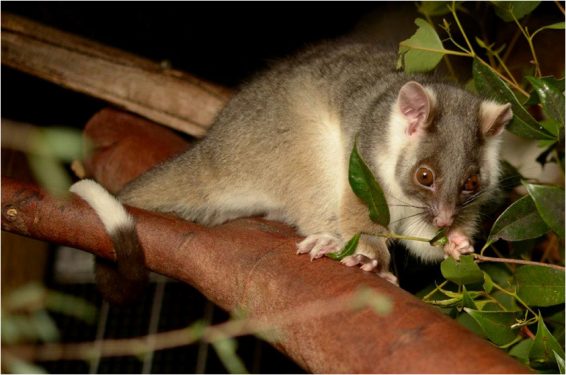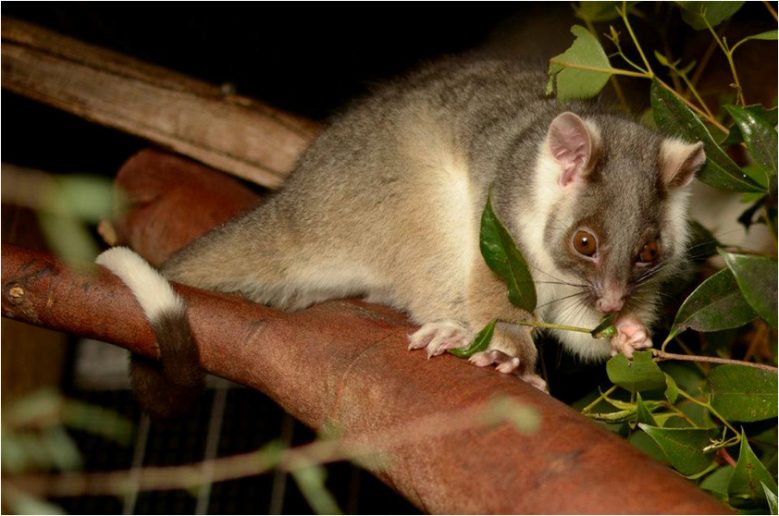
THREE wildlife experts have rejected a claim that ringtail possums are largely the cause of gum trees dying in Mt Eliza and Mt Martha.
Ecologist Jeff Yugovic told Balcombe Estuary Reserves Group’s recent annual meeting that possums were damaging and killing eucalypts, especially swamp gum and narrow-leaf peppermint.
He said the answer to the problem was to clear dense understorey where possums live, forcing them to the ground so they can be taken by foxes, their major remaining predator (“Fox seen as answer to possum problem”, The News, 17/11/15).
Six native predators that controlled ringtails in the past were now rare or extinct, he said. They were the powerful owl, grey goshawk, spot-tailed quoll, lace monitor, dingo and tiger snake.
Ecologist Mal Legg, zoologist Hans Brunner, and wildlife rescuer and bushland regenerator Craig Thomson have repudiated the controversial theory, which Dr Yugovic first published in 2012.
Mr Legg, who did the research for Mornington Peninsula Shire’s wildlife atlas released earlier this year, said the reasons for eucalypt dieback were complex and could not be blamed on possums alone.
Many trees were suffering from drought stress and had lowered immune systems. Longicorn beetle larvae were ringbarking trees.
Many types of eucalypt were dying in lowland forest, grassy woodland, herb-rich woodland forest and swampy woodland. “We are seeing massive changes to habitat because of weeds such as sweet pittosporum and monterey pine,” he said.
“The last thing we should be doing is helping foxes. Tasmania has many mammals not seen in Victoria because it doesn’t have foxes.”
Mr Brunner said causes of tree dieback included root and leaf diseases, insect defoliators, bark- and wood-boring insects, salt and chloride toxicity, drought, bushfire, altered water tables, and smothering of trees by exotic ivy and other plants.
But Dr Yugovic said it was easy to distinguish possum damage from all other forms of tree decline by the state of branches on affected eucalypts.
Mr Brunner said dogs, foxes and cats had decimated the native mammal population of the peninsula. “At least nine species of mammals have already become extinct on the peninsula,” he said.
“To give more freedom to foxes by clearing understorey will only exacerbate this tragic loss.
“In my research into the diet of foxes, ringtails occurred in 11 per cent of scats while 89 per cent contained mostly remains of endangered native mammals and birds. This surely does not justify the use of foxes for the reduction of ringtails.”
He said reducing understorey would “exacerbate the loss of even more native mammals, insects, birds and reptiles”.
Mr Thomson said he respected Dr Yugovic’s “knowledge of flora but I’m really concerned by his comments on fauna as it supports a misinformed opinion in the wider community that sees wildlife as pests”.
“More than 30 per cent of our native fauna is either extinct or threatened with extinction,” he said.
He said Dr Yugovic’s claim that Mt Eliza had up to 16 ringtails a hectare, the highest known density of the marsupial in natural eucalypt vegetation in Australia, was questionable.
“He is quoting a survey that counted possums on two nights over three weeks. A proper survey would take 12 months,” he said.
“Soon after the survey, we had a run of high temperatures that decimated the peninsula’s ringtail population.”




